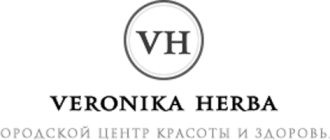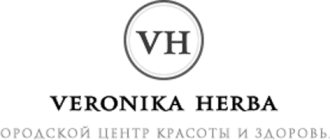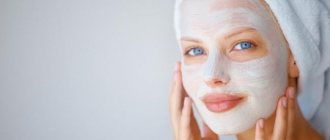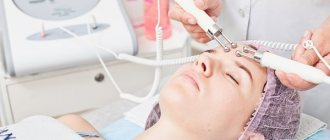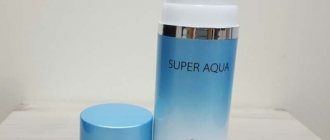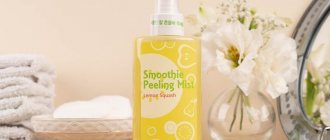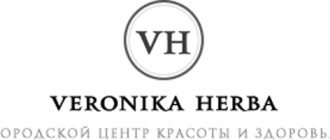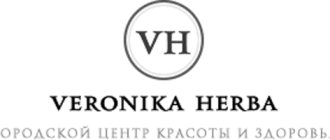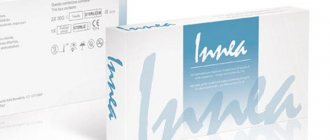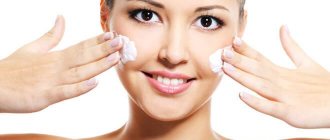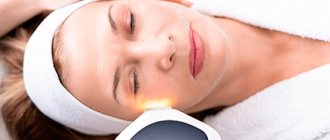From this article you will learn:
- What is a glycolic facial peel?
- How is glycolic facial peeling performed in beauty salons?
- What is glycolic facial peeling like?
- What are the indications and contraindications for glycolic facial peeling?
- What are the advantages and disadvantages of glycolic facial peels?
- What side effects can you expect after a glycolic facial peel?
- How often can you do a glycolic facial peel?
- How much does glycolic facial peeling cost in beauty salons?
- How to make a glycolic facial peel at home
- How to do glycolic facial peeling at home step by step
Recently, acid peeling has been in great demand. This cosmetic procedure has many advantages: it tightens and rejuvenates the skin, reduces visible wrinkles, freckles and age spots. Acid peels are performed in professional salons, but today some of them can be done at home without the help of specialists. In our article we will tell you what glycolic facial peeling is, consider the benefits of this procedure, and introduce you to the rules of skin care after it.
What is a glycolic facial peel?
This chemical facial peel is performed with glycolic acid. Previously, this acid was made from sugar cane. Now the production is based only on artificial drugs. The solution affects the topmost layer of skin (epidermis). Fruit acid kills old cells while stimulating the functioning of others at deeper levels. Thanks to this, we observe a noticeable rejuvenation effect. The face acquires a healthy color and becomes fresher. The condition of the skin improves.
Let us repeat that glycolic acid belongs to fruits. In nature, it can be found in sugar cane and unripe grapes. Thanks to its composition, it is able to quickly penetrate the skin, activating rejuvenation processes.
Glycolic peeling for the face at home involves treating the skin with a special composition containing acid. During the procedure, dead skin cells, impurities, and toxins are removed.
Under the influence of the solution the following occurs:
- collagen production;
- stimulation of skin cell regeneration;
- activation of internal processes in the body;
- cleansing the upper layers of the epidermis;
- decreased sebum production;
- reduction of wrinkles;
- skin protection from ultraviolet radiation;
- moisturizing the skin;
- increasing skin tone;
- reducing the visibility of age spots;
- reducing the number of acne.
During peeling, the top layer of skin is affected. The destruction of dead cells provokes the production of natural collagen. Due to this, skin renewal and regeneration occurs. The first visible effect is noticeable a couple of hours after the procedure.
Read the material on the topic: Chemical peeling of the face: your skin will breathe a new breath!
Obtaining Glycolic Acid
Glycolic acid has gained great popularity in industry: for example, it is used in the food, leather, oil and gas, manufacturing and textile industries. But the compound is most widespread in the production of cosmetics.
In industry, the most commonly used method for obtaining the compound in question is the carbonylation of formaldehyde. The reaction is based on the interaction of carbon monoxide with formaldehyde and water. Strong acids and salts formed on their basis are used as catalysts. The reactions take place at temperatures ranging from 110 to 200 degrees and pressures of the order of 600-700 atm. Acid formation occurs due to the equipment used and the maintenance of the required conditions.
An equally common method for producing glycolic acid is the saponification reaction of a carboxylic acid. The reaction occurs at temperatures ranging from 100 to 160 degrees. Upon completion, the resulting solution is subjected to a filtration procedure.
The industry knows a method for producing glycolic acid by hydrolysis of cyanohydrin. It is obtained by the reaction of formaldehyde with hydrocyanic acid. Compounds based on alkali metals are used as catalysts.
How is glycolic facial peeling performed in beauty salons?
- Preparation.
If you are doing a glycolic peel for the first time, you need to prepare your skin in advance for the effects of the active substance. To do this, apply products with one of the acids to your face every evening: citric, mandelic or glycolic. Almond is weaker than the others, so it can be safely used to treat sensitive skin.
- Peeling.
The procedure begins with cleansing the skin of impurities and cosmetics. Next, the specialist proceeds directly to peeling. The acid is applied to the forehead, chin, nose and cheeks. The area around the eyes should remain untouched.
The exposure time of the drug ranges from 2 to 15 minutes. The exact period should be selected by a cosmetologist, taking into account the sensitivity of the epidermis and the concentration of acid in the chosen product. During the procedure, you must carefully monitor the skin's reaction. If redness, itching and burning begin, a specialist should remove the mixture.
Glycolic facial peeling is removed with a neutralizer. After this, the skin should be rinsed with cold water and a nourishing mask should be applied.
- Recovery phase.
A nourishing mask after the procedure is enough for the skin to recover. However, if desired, you can use a sedative. Choose formulations with wheat oil, jojoba oil or grape seed extract.
To avoid negative consequences from the procedure, follow the following rules for further skin care:
- During the recovery period, you should stop using decorative cosmetics.
- It is also recommended to avoid visiting baths and saunas.
- To ensure that glycolic acid facial peeling gives the desired effect without skin irritation, apply a strong sunscreen before sun exposure.
Read material on the topic: Fruit peeling: in a beauty salon and at home
Cleansing: oily spot
| 5-15% is the optimal content of fruit acids in cosmetics. |
| 3.5ph is the correct PH for cosmetics with fruit acids. |
| You can use cosmetics with alpha hydroxy acids 7 days a week |
Fruit acids are famous not only for their exfoliating properties. They are also good at sebum regulation - they reduce the production of sebum by the sebaceous glands. Therefore, cosmetics with AHA are recommended for young girls who suffer from the fact that their faces are constantly shiny.
However, the positive effect of fruit acids does not end there. They will certainly appeal to women of any age, whose skin is “decorated” by enlarged pores: AHA narrows them. And fruit acids, like any other, have a corrosive effect: in cosmetics they dissolve sebaceous plugs, that is, blackheads.
And, most importantly, using products with AHA, you will not only get rid of comedones, but also help your skin cleanse. Don’t forget, sweat comes out through its pores, and along with it all the waste and toxins that enter the body with food, medications, and also from the air. By getting rid of sebaceous plugs, you will greatly speed up the detoxification process.
Types of glycolic peeling for the face
There are two types of glycolic peeling:
- surface (with acid content less than 40%);
- aggressive (composed of 40–70% acid).
How are these two procedures different?
- Superficial peeling.
During the session, the upper layers of the epidermis are affected. Recovery is accompanied by redness of the skin. This is normal and traces should disappear after 48 hours. It is convenient to perform such a glycolic peel a few days before an important event.
- Aggressive peeling.
It affects the deeper layers of the skin, eliminating the problem of acne and post-acne and reducing pigmentation. This glycolic facial peel is suitable for women 30 years and older. After the procedure, pain, peeling and hyperemia are possible.
Recommended articles on the topic:
- How to properly care for your skin
- How to remove wrinkles on the face: the most effective methods
- Microcurrent facial therapy is a beneficial treatment for your skin
Indications and contraindications for glycolic facial peeling
Professionals say that this peeling option is indicated for:
- preparation for plastic surgery or other complex beauty procedures;
- significant pigmentation, acne, pimples, post-acne, comedones;
- the presence of small wrinkles, folds and other age-related changes;
- ingrown hair problem;
- hyperkeratosis;
- dry skin;
- presence of large pores on the face;
- deep acne scars;
- scars, stretch marks;
- molluscum contagiosum.
Glycolic peeling for the face is a completely safe procedure, but experts advise paying attention to contraindications.
It cannot be done in the following cases:
- In spring or summer.
- If you are pregnant or breastfeeding.
- If there are warts in the area of the face where peeling is planned.
- With herpetic disease in the acute stage.
- With telangiectasia.
- If you have recently been in the sun for a long time or have been tanning.
- If there are wounds, scratches, or inflammation at the site of the intended peeling.
- Brunettes with dark skin and dark eyes.
- If you suffer from intolerance to one of the elements of the mixture. To ensure that glycolic facial peeling does not have negative consequences for the skin and the body as a whole, do an allergy test before the procedure.
- For rosacea.
- After chemotherapy or hormonal therapy.
- For severe photosensitivity of the skin.
- After microdermabrasion treatment.
- For vascular problems.
- After recent hair removal.
- When using retinoids.
Read material on the topic: Almond peeling for the face: features of the procedure
Advantages and disadvantages of glycolic peeling for the face
Pros of glycolic peeling:
- The first effect will be noticeable within a few hours after the procedure.
- Rapid restoration of facial skin.
- Solves many problems: stops aging, eliminates various defects, unevenness, wrinkles. Facial rejuvenation occurs.
In the photo below you can compare your face before and after glycolic peeling.
Disadvantages of the procedure:
- After the session, peeling and redness of the skin is possible. Their duration ranges from several hours to a couple of days.
- More significant consequences are swelling and the appearance of crusts on the face. You should consult a cosmetologist about treatment.
- In rare cases, the effect of glycolic peeling does not occur.
- High price for a one-time session.
- Some girls complain that after the procedure, skin pigmentation and other serious abnormalities begin.
Reviews of facial peeling with glycolic acid can be found on the Internet.
Read material on the topic: Depigmenting peeling: everything you wanted to know about it
Beneficial properties of glycolic acid
There are 4 main positive properties for human skin:
- exfoliating – the compound helps remove dead scales;
- moisturizing – glycolic acid moisturizes the skin and nourishes it with beneficial substances, which improves the overall condition of the face;
- lightening and correction of relief - the skin is actively renewed: due to its properties, it is used to correct scars, narrow pores and get rid of pigmentation;
- anti-aging effect – glycolic acid makes facial wrinkles less noticeable.
In what cases is the use of glycolic acid recommended?
Acne
Experts recommend using medications containing the compound in question to help combat facial rashes. So, after regular use of peelings, acne goes away much faster, comedones dissolve along with them, the skin becomes smoother, and a beautiful healthy glow appears.
Atrophic scars
With a weekly application of a 70% glycolic acid solution to the skin, the scars first become less noticeable and then disappear completely. The general condition of the face improves significantly.
Melasma
Experiments have shown that the use of glycolic acid-based peels makes the skin color more uniform.
Hyperpigmentation
The 35 percent glycolic peel showed good results. Tests were carried out on patients with post-inflammatory hyperpigmentation: the product used brought a positive result and lightened the damaged areas of the skin.
Photoaging
Cosmetics based on glycolic acid can significantly improve the appearance of the skin and its general condition, reducing the effects of ultraviolet exposure. Glycolic acid helps smooth out fine wrinkles.
Procedures with glycolic acid are allowed after reaching the age of 16. Products based on glycolic acid are most often recommended for those with oily skin - the compound perfectly solves the problem of oily shine and helps tighten pores.
The substance in question is used if there are problems with oily hair.
Glycolic acid also helps get rid of stretch marks on the skin, remove unwanted freckles and help get rid of minor irregularities.
Side effects of glycolic facial peels
The glycolic facial peel procedure may bring some side effects and complications. Usually, negative consequences arise if a low-quality drug was used, as well as if the choice of exposure time for the product was unsuccessful.
Possible problems:
- Swelling of the skin.
This phenomenon becomes noticeable a few hours after peeling. The swelling should go away on its own, but in the future you should perform the procedure more carefully.
- Burns.
Symptoms include severe burning of the skin and significant redness. To solve the problem, wash your face with cold water and apply a soothing cream.
- Allergic reaction.
Glycolic facial peels may cause an allergic reaction. To avoid this, take a test in advance to identify intolerance to the elements of the drug. The test is as follows: a little acid is placed on the bend of the elbow or wrist and left for 7-10 minutes.
You are allergic if you experience:
- burning;
- redness;
- swelling and itching at the site of exposure to the solution.
If you have at least one of the listed symptoms, this procedure cannot be done.
- Dark spots.
If you are prone to pigmentation, peeling may cause dark spots to appear.
- Dryness.
Negative consequences such as dryness and flaking are also possible. If your skin is prone to this, you should reduce the acid concentration, and after the procedure, generously lubricate your face with moisturizer.
If you are unsure whether to do a glycolic peel, look at photos and reviews about the procedure on the Internet.
Read material on the topic: Retinoic yellow peeling done by Hollywood stars
How much does glycolic facial peeling cost in beauty salons?
The cost of one procedure is 1500–5000 rubles. It depends on the price at which glycolic acid is purchased for facial peeling, as well as on the level of the establishment and the qualifications of the specialist. The total cost of the course is at least 7,500 rubles.
Such a high price for glycolic facial peeling is fully justified by the good results that clients receive.
Before going to the doctor, be sure to evaluate the quality of the clinic based on reviews from previous visitors. For those who are not ready to trust doctors, there is a way to do the peeling yourself.
Read the material on the topic: Ultrasonic peeling of facial skin - a pleasant and beneficial procedure for your skin
Rejuvenation: the right incentive
The importance of hyaluronic acid is difficult to overestimate, because the elasticity of our skin depends on it. This substance attracts water and is responsible for the condition of the epidermis; it is also, in fact, a frame that holds intertwined collagen and elastin fibers. Accordingly, the less hyaluronic acid in the epidermis, the worse we look.
And with age, its reserves inevitably begin to dry up. Fortunately, no one canceled fruit acids. They stimulate fibroblasts - connective tissue cells of the body, which are responsible for the production of hyaluronic acid, as well as collagen and elastin. Of course, you shouldn’t hope that after using cosmetics with AHA, wrinkles will disappear completely. However, you can firmly count on the fact that small wrinkles will be significantly smoothed out, and deep ones will become less pronounced.
How to make a glycolic facial peel at home
Before you begin the home procedure, you will need to purchase the following products:
- degreasing lotion;
- soothing cream;
- peeling agent;
- rich cream to moisturize the skin.
You need to buy glycolic acid for facial peeling (with a concentration of 30%). If you are doing the procedure for the first time, you should choose less concentrated formulations. Large amounts of acid can damage the skin, causing irritation and other problems. The increase in the percentage of active ingredient in the drug should be gradual. The first peeling lasts no more than one minute.
You don’t have to buy a ready-made product at the pharmacy, but make it at home from natural ingredients.
You will need:
- a tablespoon of cane sugar;
- freshly squeezed lemon juice;
- half a glass of mineral water.
All products must be mixed together until smooth. The solution should have the consistency of syrup. Gently apply the mixture to the skin using your fingertips. Then wait 7-10 minutes and wash it off with warm water. This mask is suitable for more frequent use than regular glycolic peeling. The optimal time interval between procedures is 3-4 days. In total you will need to complete 10–12 sessions. In the future, you will be able to determine how long you need to keep the mask on your skin for maximum results.
Before the procedure, we advise you to study reviews from cosmetologists about glycolic facial peeling at home, the process itself, and the rules for choosing products at the pharmacy.
Read material on the topic: Gas-liquid skin peeling - beauty without pain and injections
Stages of glycolic facial peeling at home
Homemade facial peeling is performed in five stages:
- Skin cleansing.
First, you need to remove all cosmetics from the surface of your face and wipe your skin with a degreasing lotion. Dirty skin interferes with the acid's effects.
- Application of the product.
You can apply the peeling agent with a regular cotton pad. The sequence is as follows: forehead, nose, cheeks, chin. Avoid the area around the eyes and lips. Glycolic facial peeling lasts up to 5 minutes. If itching and excessive burning of the skin begin, redness and swelling have formed, the procedure must be completed.
- Neutralization.
Next, a slightly alkaline solution (neutralizer) is used. Dip a cotton pad into it and wipe the skin thoroughly.
- Completion of the procedure.
Wash your face with cold water. Salon procedures are performed using special solutions, but we can assure you that clean running water works just as well. This stage is performed to restore the water-salt balance of the skin, as well as to eliminate dryness and flaking.
- Soothing care.
Glycolic facial peeling is completed with the application of a moisturizing mask. Over the next few days, moisturize your skin generously with creams. During the recovery period, refrain from using decorative cosmetics.
During the course of glycolic peeling, exclude solarium, bathhouse and sauna. High temperatures can provoke negative consequences.
Each glycolic facial peeling session should be completed with a soothing compress. To prepare it, it is better to use natural ingredients (medicinal herbs). For example, to prepare a solution with celandine, pour boiling water over it and put on fire (for 5–7 minutes). Wait for the broth to cool down. Place the resulting paste on the skin and leave for 20 minutes.
You can also make a decoction of green tea, which is prepared according to the same principle as the celandine solution.
Read material on the topic: How to care for facial skin: home care and salon treatments
Where to sign up for glycolic facial peeling in Moscow
Nowadays, you no longer have to spend a lot of time performing complex and unpleasant procedures at home. It is much easier to seek help from real professionals - the Veronika Herba beauty and health center, equipped with effective and modern equipment.
Why clients choose Veronika Herba Beauty and Health Center:
- This is a beauty center where you can take care of yourself at a reasonable cost, while your face and/or body will be treated not by an ordinary cosmetologist, but by one of the best dermatologists in Moscow. This is a completely different, higher level of service!
- You can receive qualified help at any time convenient for you. The beauty center is open from 9:00 to 21:00, seven days a week. The main thing is to agree with your doctor in advance on the date and time of your appointment.
Sign up for a consultation with a specialist by phone +7 (495) 085-15-13
, and you will see for yourself!
Moisturizing: natural factor
Everyone knows that the beauty and youth of the epidermis directly depend on its moisture content. Fruit acids will also help you in this matter. On the surface of our skin there is a group of hygroscopic substances (amino acids, urea, etc.), which form the so-called NMF (natural mustoraising factor), which in English means “natural moisturizing factor”. This friendly company draws water from the surrounding air, absorbs it like a sponge, and then moisturizes the epidermis from these reserves.
As for fruit acids, they dissolve the skin protein keratogelin into amino acids and thereby enhance the hygroscopic properties of our natural moisturizing factor. After all, the denser the rows of its components, the better it absorbs water.
